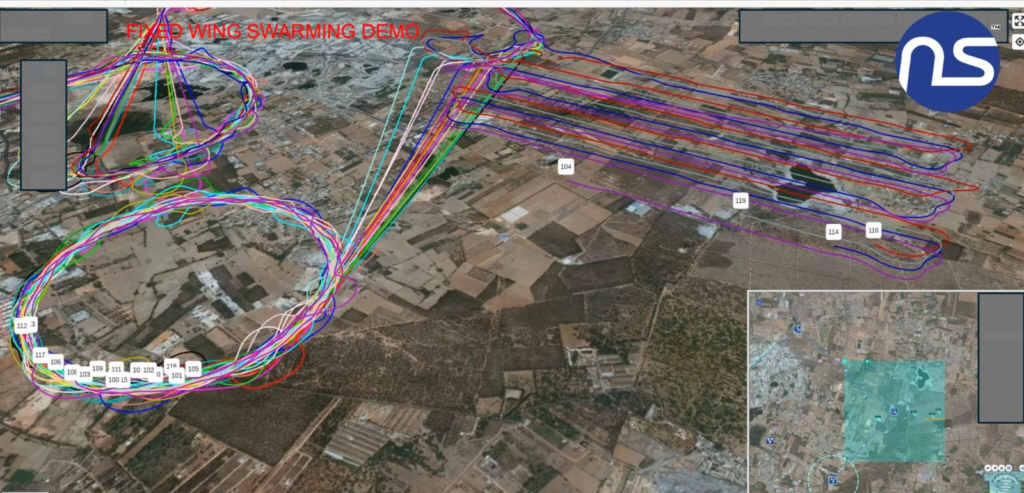~ Vaibhav Ugale @FronlinerUV
Unmanned Systems are transforming the landscape of modern warfare, as evidenced by the Russia-Ukraine conflict. Both sides have embraced a range of unmanned technologies, from traditional loitering munitions to the deployment of explosive-mounted FPV drones, UGVs, and USVs, opting for economically feasible solutions. However, these systems are currently operated with human oversight. With advancements in AI/ML, control systems, and sensors, militaries worldwide are investing in the development of autonomous unmanned systems, reducing the need for human intervention. This evolution includes high-level autonomy, navigation in denied environments, and both homogeneous and heterogeneous swarming.

For navigation in GNSS-denied environments, unmanned systems utilise SLAM algorithms and data from VIO (Visual Inertial Odometry), interpreting both using ML for navigation, or employ GNSS anti-jamming modules. In swarming, unmanned systems communicate through a common network, operating with varying levels of autonomy to make local decisions based on observations and communication with neighbouring systems. Heterogeneous swarming involves different types of systems within a particular unmanned domain (e.g., Quadcopter and Hexacopter UAVs), each assigned tasks according to its capabilities. These systems possess distributed intelligence, redistributing missions among themselves if any component encounters uncertainty. High levels of autonomy can be achieved through the integration of the OODA loop, fuzzy behaviour trees, and reinforcement learning, enabling systems to adapt to changing environments and uncertain conditions through continuous learning and real-time decision-making.

In recent developments, Collaborative Autonomy, or MUM-T (Manned-Unmanned Teaming), is emerging in military unmanned systems. Different types of unmanned systems, such as UAVs, UGVs, USVs, and AUVs, collaborate with each other or with manned systems like fighter jets, tanks, or combat ships. These unmanned systems share visual data gathered by payloads and sensors through a dedicated communication network to enhance situational awareness and decision-making, allowing forces to execute missions in hostile environments without direct human involvement. Shield AI, a US-based company, has developed an AI pilot named HiveMind for Collaborative Autonomy/MUM-T, integrated and tested on various unmanned systems and manned platforms. Similarly, Indian defence startup Newspace Research and Technologies (NRT) is developing a next-generation intelligence suite called MOSAIC^nTM for Collaborative Autonomy, focusing on combat mass effect through homogeneous and heterogeneous swarms as well as MUM-T.
The MOSAIC^nTM suite enables decentralised fused teaming missions, supporting multiple swarming agents with self-healing and emergent behavioural capabilities, achieving Level-5 autonomy across integrated platforms like UAVs, UGVs, USVs, and loyal wingmen. In this framework, human oversight sets objectives, while systems execute tasks without predefined waypoints, dynamically responding to the complexities of a contested battlefield with limited GPS and communication.

This suite will be integrated into NRT-HAL’s Combat Air Teaming Systems platform, enhancing cooperative combat swarming systems with advanced flight controllers, sensors, computing units, vision processing units, AI/ML capabilities, and advanced RF/5G connectivity, thus introducing combat cloud capabilities. In April, NRT tested a swarm of ALPF (Air-Launched Flexible Assets) UAV prototypes with MOSAIC^nTM onboard. This development will provide Indian Forces with an advantage in future battlefield operations such as SEAD/DEAD.
Looking ahead, the integration of MOSAIC^nTM represents a significant leap forward for the Indian Armed Forces. This pioneering technology not only enhances operational capabilities but also ensures greater resilience and adaptability in complex combat scenarios. As the battlefield becomes increasingly digital and network-centric, the ability to deploy autonomous, intelligent, and cooperative unmanned systems will be crucial. MOSAIC^nTM‘s advanced AI-driven autonomy and collaborative functionality position the Indian Forces at the forefront of modern military innovation, ensuring they are well-prepared to face the challenges of future warfare with enhanced efficiency and effectiveness.
